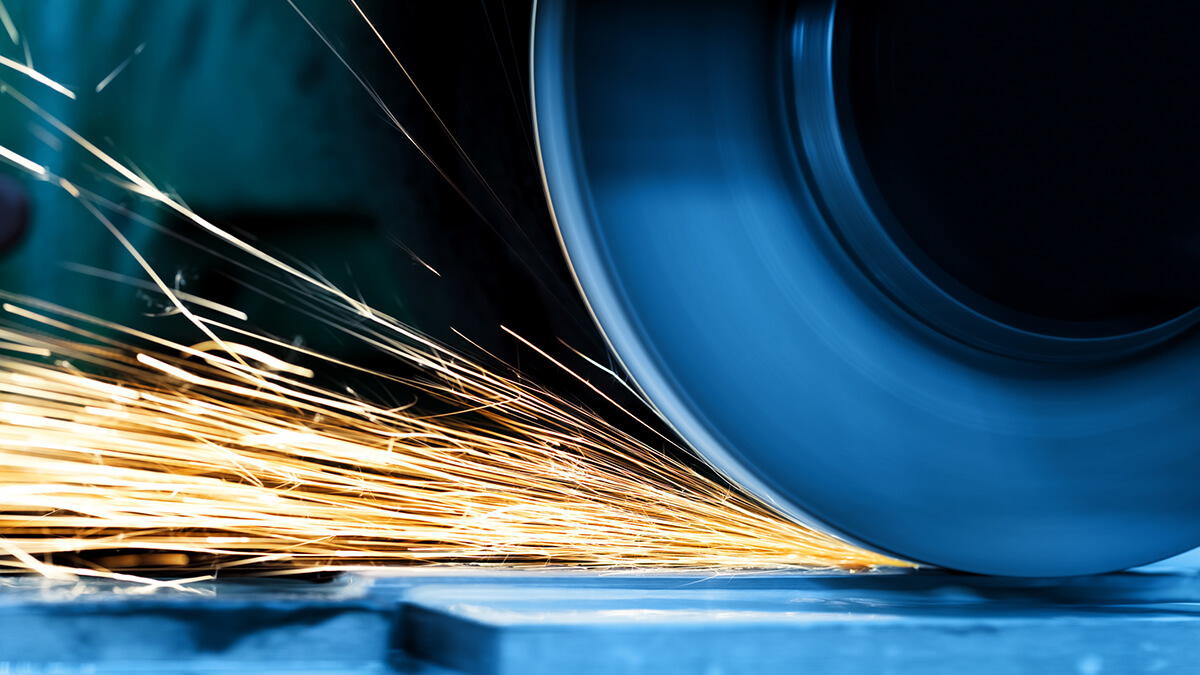Grinding wheels are one of the most important tools in modern manufacturing, playing a crucial role in processes that involve material removal, finishing, and surface preparation. These wheels are used in a wide range of industries, including metalworking, automotive, aerospace, and even in jewelry making. Understanding the properties, types, and applications of grinding wheels is key for anyone working with or around them. In this article, we’ll explore the concept of grinding wheels, their components, different types, and their essential roles in manufacturing.
What is a Grinding Wheel?
A grinding wheel is a circular tool made up of abrasive particles that are bonded together to form a solid, but porous structure. These wheels are used in various grinding operations, where they help to shape, sharpen, smooth, or finish a workpiece. The abrasive particles are usually made from materials like aluminum oxide, silicon carbide, or diamond, and the bonding agents can be made from resins, rubber, or metal. The structure and composition of the wheel determine its grinding performance and suitability for specific tasks.
Components of a Grinding Wheel
A grinding wheel consists of three main components:
- Abrasive Material: The abrasive material is the primary cutting tool of the grinding wheel. It is responsible for removing material from the workpiece. Common abrasives include:
- Aluminum oxide: This is the most commonly used abrasive. It is ideal for grinding ferrous metals and is generally hard and durable.
- Silicon carbide: Known for its sharpness, silicon carbide is ideal for grinding non-ferrous metals, plastics, and ceramics.
- Diamond: This is the hardest abrasive available and is used for grinding very hard materials such as carbide, glass, and ceramics.
- Cubic boron nitride (CBN): A synthetic abrasive harder than aluminum oxide but not as hard as diamond. It is commonly used for grinding hardened steels.
- Bonding Material: The bonding material holds the abrasive particles together and determines the overall strength and structure of the wheel. Common bonding materials include:
- Vitrified bond: Made from ceramic materials, these bonds are strong and heat-resistant, making them ideal for high-precision grinding applications.
- Resinoid bond: A resin-based bonding material that offers flexibility and is commonly used in applications where less pressure is needed during grinding.
- Rubber bond: Often used for finishing operations where a smoother surface finish is required.
- Metal bond: Provides a stronger, more durable bond, typically used in applications involving very hard abrasives like diamond.
- Wheel Structure: The structure of the wheel refers to the spacing and distribution of the abrasive particles within the wheel. This affects the grinding efficiency, wheel life, and surface finish of the workpiece. The structure is typically denoted by a number, with lower numbers indicating a denser, more compact wheel and higher numbers indicating a looser, more open structure.
Types of Grinding Wheels
Grinding wheels come in a variety of types, each designed for specific grinding tasks. Some of the most common types include:
- Straight Wheels: These are the most basic type of grinding wheel and are typically used for surface grinding, internal grinding, and cylindrical grinding. They are the most widely used type and come in different sizes and grades depending on the application.
- Cup Wheels: Cup wheels have a cup-shaped design, and they are used for grinding large flat surfaces, such as slabs of metal or concrete. They are ideal for operations requiring high material removal rates.
- Flared Cup Wheels: Similar to cup wheels, flared cup wheels have a slight flare on the outer edge, making them suitable for operations that require greater precision and finer finishes. They are often used for polishing or fine grinding applications.
- Segmented Wheels: These wheels consist of several segments or blocks of abrasive material, which are bonded together. Segmented wheels are particularly useful in high-production environments, where rapid material removal is essential.
- Mounted Points: These are small grinding wheels mounted on a spindle or shaft and are used for intricate, precision work, such as grinding internal surfaces, small parts, or for polishing delicate features.
- Diamond and CBN Wheels: These wheels are made with diamond or cubic boron nitride abrasives, which are used for grinding extremely hard materials like carbide, glass, or ceramics. They are expensive but necessary for specialized tasks that require the hardest abrasive materials available.
Applications of Grinding Wheels
Grinding wheels are used in a variety of industries for different applications, ranging from simple sharpening to complex finishing operations. Some common uses of grinding wheels include:
- Surface Grinding: This is the process of smoothing and finishing flat surfaces of a workpiece. Surface grinding typically involves the use of a straight grinding wheel and is used in manufacturing components that require high precision, such as engine parts or machine tools.
- Cylindrical Grinding: Cylindrical grinding is used to grind the outer surfaces of a cylindrical workpiece. This process is used in the production of shafts, rods, and other cylindrical parts.
- Internal Grinding: Internal grinding uses a small grinding wheel to grind the inner surfaces of a cylindrical workpiece. This process is essential for manufacturing components like bearings, gears, and other parts with precise internal dimensions.
- Centerless Grinding: In this process, the workpiece is held between two rotating wheels—one of which is the grinding wheel, while the other acts as a regulating wheel to control the speed and position of the part. Centerless grinding is commonly used for producing long, thin components such as rods and bars.
- Precision Grinding: This involves the use of grinding wheels to achieve extremely fine finishes and tolerances. Precision grinding is often used in industries such as aerospace, where parts need to be manufactured with tight dimensional tolerances.
- Tool and Cutter Grinding: Grinding wheels are often used for sharpening cutting tools such as drills, end mills, and lathe tools. These wheels are designed to grind specific angles and shapes to restore the cutting ability of tools.
- Finishing Operations: Grinding wheels are also used in finishing operations like polishing, deburring, and cleaning, where the goal is to improve the surface appearance and quality of the workpiece.
Advantages and Disadvantages of Grinding Wheels
Advantages
- Precision: Grinding wheels can achieve very fine tolerances and surface finishes, making them ideal for high-precision manufacturing.
- Versatility: There is a wide range of grinding wheels available, making it easy to tailor the process to the specific material and task.
- High Material Removal Rate: Grinding wheels can remove a significant amount of material quickly, especially when working with high-hardness materials.
Disadvantages
- Heat Generation: Grinding processes generate a lot of heat, which can lead to thermal damage to the workpiece if not properly managed.
- Wear and Tear: Grinding wheels wear out over time and need to be replaced, especially when grinding harder materials.
- Cost: High-quality grinding wheels, especially those with diamond or CBN abrasives, can be quite expensive.
Conclusion
Grinding wheels are indispensable in the world of manufacturing, offering precise, efficient, and versatile material removal. Whether used for surface grinding, cylindrical grinding, or precision finishing, these tools are integral to the production of high-quality, durable components. The variety of abrasive materials, bonding agents, and wheel designs makes grinding wheels suitable for a broad spectrum of industries, from automotive to aerospace to tool manufacturing. Understanding the components, types, and applications of grinding wheels is essential for optimizing their use in any manufacturing process.

